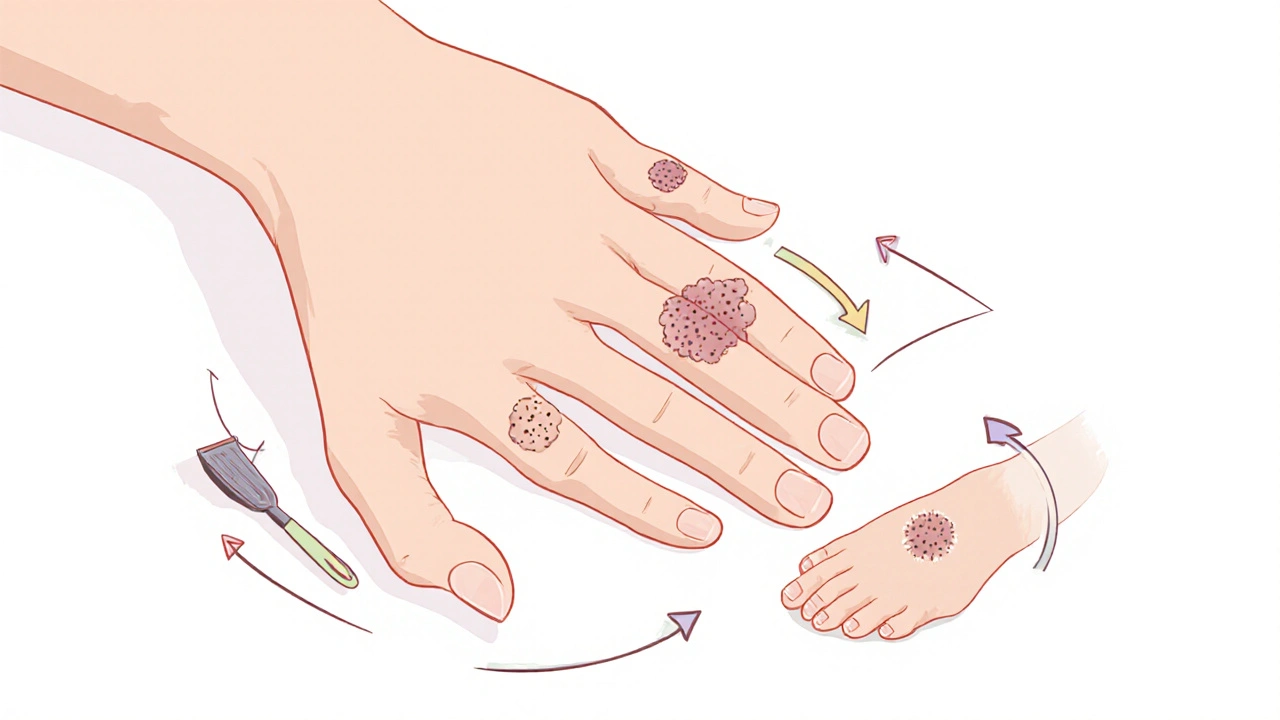Salicylic Acid: What It Does, How It Works, and What Alternatives You Should Know
When you see salicylic acid, a beta hydroxy acid used to treat acne, warts, and psoriasis by breaking down dead skin cells. Also known as 2-hydroxybenzoic acid, it’s one of the most common active ingredients in over-the-counter skin care products. Unlike harsh scrubs, it doesn’t physically rub off skin—it slips into pores, softens buildup, and helps your skin shed the gunk that causes breakouts. It’s not just for teenagers with acne. Adults dealing with stubborn blackheads, rough patches from keratosis pilaris, or even plantar warts often turn to it because it works where lotions and creams fail.
Salicylic acid is a keratolytic agent, a substance that breaks down keratin, the protein that holds dead skin cells together. That’s why it’s so effective on thickened skin like calluses or warts. It’s also oil-soluble, which lets it get deep into pores where water-based ingredients can’t reach. This makes it a go-to for oily skin types and acne-prone people who need more than just surface cleaning. But it’s not magic. If your skin is sensitive, it can cause dryness or irritation—especially if you’re using it with other strong actives like retinoids or benzoyl peroxide. That’s why many people start slow: once every other day, then build up as their skin adjusts.
It’s not the only option. benzoyl peroxide, a powerful antibacterial that kills acne-causing bacteria and reduces inflammation is often paired with salicylic acid for better results. Then there’s glycolic acid, an alpha hydroxy acid that works on the skin’s surface to brighten and smooth. It’s great for texture and tone, but doesn’t penetrate pores like salicylic acid does. For warts, some turn to cryotherapy or salicylic acid patches—both work, but the acid takes weeks, while freezing works faster if done right. And for psoriasis, doctors sometimes recommend coal tar or calcipotriene instead, because salicylic acid alone won’t calm the immune response behind the flaking.
What you’ll find in the posts below isn’t a list of skincare tips—it’s real comparisons. You’ll see how salicylic acid stacks up against other treatments people actually use, what side effects to watch for, and when it’s better to switch to something else. Some of these guides look at how it interacts with other meds, what concentrations actually work, and even how to use it safely if you have sensitive skin or are pregnant. There’s no fluff. Just what works, what doesn’t, and why.
- November 7, 2025
- Comments 13
- Health and Wellness

